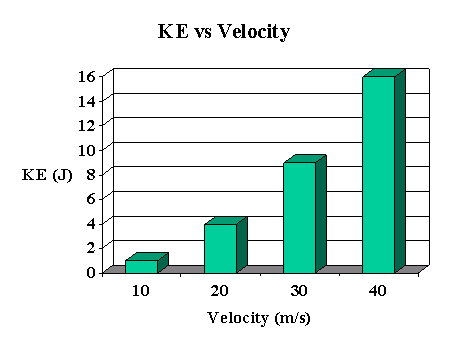The Energy Story
Energy
Is Born
Energy
Types
Energy
Changes
Energy
Generation
The Energy Problem
The Energy Solution |

 |
|
The
Ten Types
Kinetic
Energy
|
Kinetic
energy is the energy of motion. Any object that is moving
has kinetic energy. This category of kinetic energy will
be used when the energy is contained in the motion of a
single object or in the motion of a group of objects
that act as a single object.
Other
types of energy are often classified as being a type of
kinetic energy, since their energy is due to the motion,
but there are more than one object involved.
Some
of the most common examples of the energy of this type are:
|
Ball
Moving Horizontally
|
Any
single object that is moving has kinetic energy. |
|
Wind
|
The
wind is made up of air molecules. Even though there
are many of these air molecules, energy of motion is
contained in all of the molecules moving as a single
mass of air. |
|
Sound
|
Sound
is the vibration or motion of air molecules moving back
and forth. Again, these molecules act as a single mass
of air. |
|
|
The
Kinetic Energy Equation
|
|
|
This
is the equation for calculating the kinetic energy of an object,
where: m = mass (in kg), v = velocity (in m/s), and KE = kinetic
energy (in J = joules). There is a direct relationship between
KE and mass and between KE and v squared. Therefore as the mass
goes up, KE goes up. And as v goes up, KE goes up.
|
|
|
|
KE
and Car Safety Exercise
|
|
When
you are driving in a car, the danger to the people inside
in the event of an accident is closely related to the amount
of KE that the car has. Calculate the KE for a car with a
mass of 10,000 kg and moving at velocities of 10, 20, 20,
and 40 m/s. You can use the KE calculator below. Make a table
of the results. Make a conjecture about the relationship of
KE and velocity.
|
| |
|
|
|
Exercise
Answer
|
|
Look
at the bar chart showing how the KE increases with velocity.
Most people think or feel that driving at 20 m/s is only TWICE
as dangerous as driving at 10 m/s. NOT! Since the KE is related
to v squared, the KE goes up by 2 squared, or four times as
much. This misperception leads people to drive much faster
than they should.
|
|

|
|
|
|
|